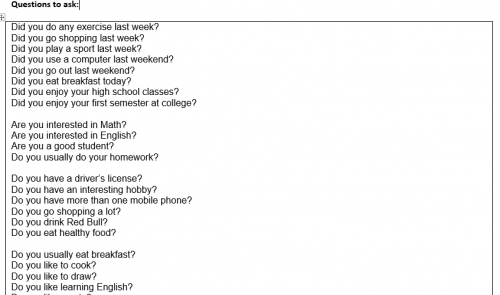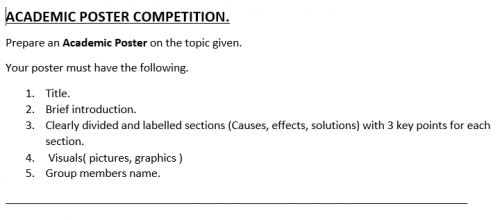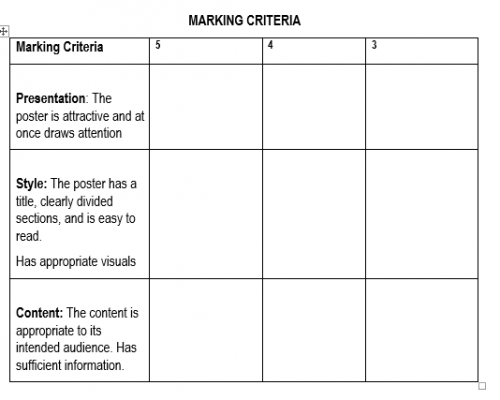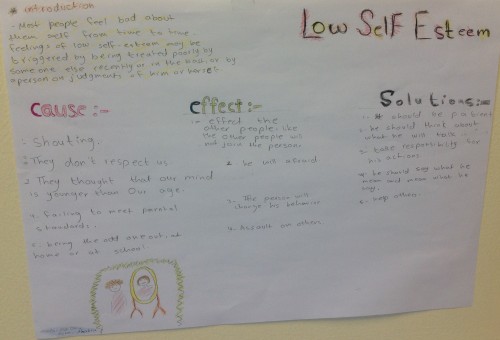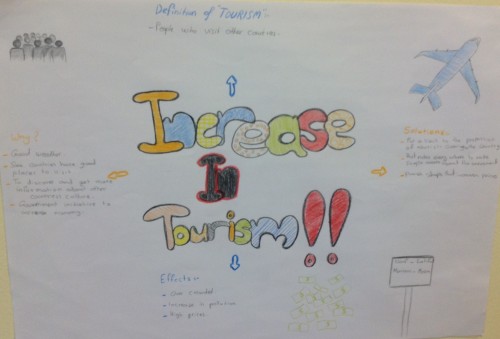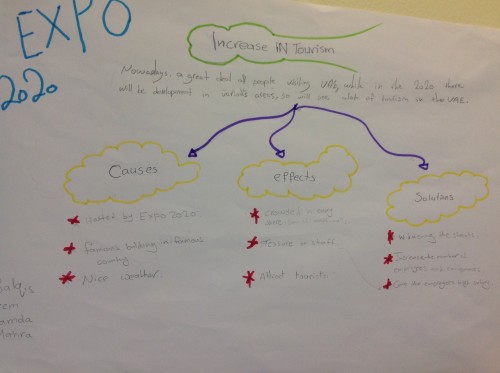Class mixers to freshen things up
Doug LovettBy Doug Lovett and Sunita Lama
It’s week 13 and this means students and teachers have likely been with each other for 130 hours or more. Teachers are experts at keeping things fresh to maintain student interest and make the old new again. However, it is at this point in the semester when, no matter how you present it, that reading exercise is becoming more and more difficult to disguise. I’d like to share various class mixer activities we did with at DWC to keep things fresh this time of the semester.
Class mixers are simply combining classes for a couple of hours with both teachers and classes in the same classroom (or preferably, a large area booked beforehand). With all the new faces, the class dynamic is instantly altered for the better and students are more productive and on-task. It’s refreshing for everyone, especially towards the end of the semester.
The following are the activities that Sunita and I did over a number of class mixer sessions. We teach Level 4, but the activities can be adapted to other levels.
- English writing and speaking: Debate
It seems as long as there is a winner involved, debates always get students going. There are numerous ways to do this, and as long as the teacher decides on a winner after each topic, the students tend to speak English and stay on task. We used a procedure where the classes were divided into YES and NO groups for brainstorming, then had YES groups join with NO groups, and one of the teachers act as the mediator. I’ve tried various ways to structure debates (point – counterpoint – discuss, etc.), but it seems no matter what I do, they just end up going at it anyway. In our debate this semester, my group only made it through about 3 topics in 50 minutes, which is a significant amount of time to spend not just speaking in English, but also developing arguments for the typical agree/disagree questions on the IELTS exam.
2. English speaking: The YES game
This activity is great for speaking, but needs very clear explanation and modeling. Students work in pairs. One student starts, asking her partner any question on the list below. Her partner must respond with “YES”. This takes some time to understand, so after I tell them the rule, I ask different students around the class, “have you ever eaten sushi?” “have you ever cheated on an assignment in school?” “did you eat breakfast today?”. After a while, they understand that they must answer yes. The student responding to the question then continues her “yes” answer with more details about the topic (which may require making something up). The partner can ask a few more questions, and then must guess if she is lying or telling the truth. The student gets one point if she guesses correctly, then it’s the other student’s turn to ask the question. They sometimes want to choose whether or not they lie or tell the truth, but I find the game works better when they are forced to answer yes all the time. In our classes, the students were engaged in this, and all speaking English for 20 minutes, but we could have easily gone on longer.
3. IELTS reading: The scanning game
In this activity, we divided the class into teams of five. Each team was given a fly swatter. We showed a scan of an IELTS reading on the OHP, and then asked students to find particular words which we shouted out. The first student to find the word and slap it with her fly swatter gets a point. She then gives the fly swatter to the next person on her team, and the teacher tells the next group what to look for. We asked them to search for specific words, as well as more general things:
“Find the name of a country”
“Find a year”
“Find an age”
“Find a colour”
“Find the word ‘cognitive’”
The fly swatters cost 7 dirhams each at Daiso, and work great because it’s obvious who is first, but you do have to make sure students understand they must SLAP and not SLIDE. Otherwise you get students trying to slide their fly swatters underneath each other. This activity is good for scanning skills in the IELTS reading section, but as we all know, students can get too competitive and excited. It’s good for a short warmup.
- Group Discussion and Academic Poster Presentation on current/ relevant IELTS topics.
For this activity students worked in groups of four. They were given newspaper article links and shown video clips on current topics and those that are relevant. After reading and watching the video, they discussed the causes, effects and possible solutions to the problem/ issue within the group. This was then followed by interesting general discussion. It turned out to be an excellent activity for promoting higher order thinking. What is to be kept in mind is the length of the article and the suitability of the video clips.
To sum up this activity, each group was given a topic (one that was discussed earlier), a sheet of A3 paper, and instructions for an academic poster. They were given forty minutes to prepare an academic poster. A good way of checking understanding, presentation and organizational skills.
A few words to sum up…
Changing the class dynamic by taking the students out of their comfort zone with class mixer activities is one way to give a refreshing change to students who may be losing steam after a long 13 weeks with their teacher. Even standard English activities can be given new energy in a class mixer situation.

